Who was Cecil Edward Search?
By Annabelle Tonkin, Collection Curation and Engagement | 19 August 2024
A horse bought for £1 carried Cecil Edward Search into his new life, framed by the dusty roads of Cobb and Co.
The London-born amateur artist followed ‘the call of the west’, painting scenes of 19th century life in the remote Queensland outposts where he worked for most of his life. Search’s paintings provide a uniquely first-hand perspective of a period where these landscapes underwent significant growth and change, largely due to the expansion of transport networks such as Cobb and Co.
Search spent 45 years working for the iconic coach company, which connected rural communities through their mail and passenger services. Read more about his extraordinary story below.
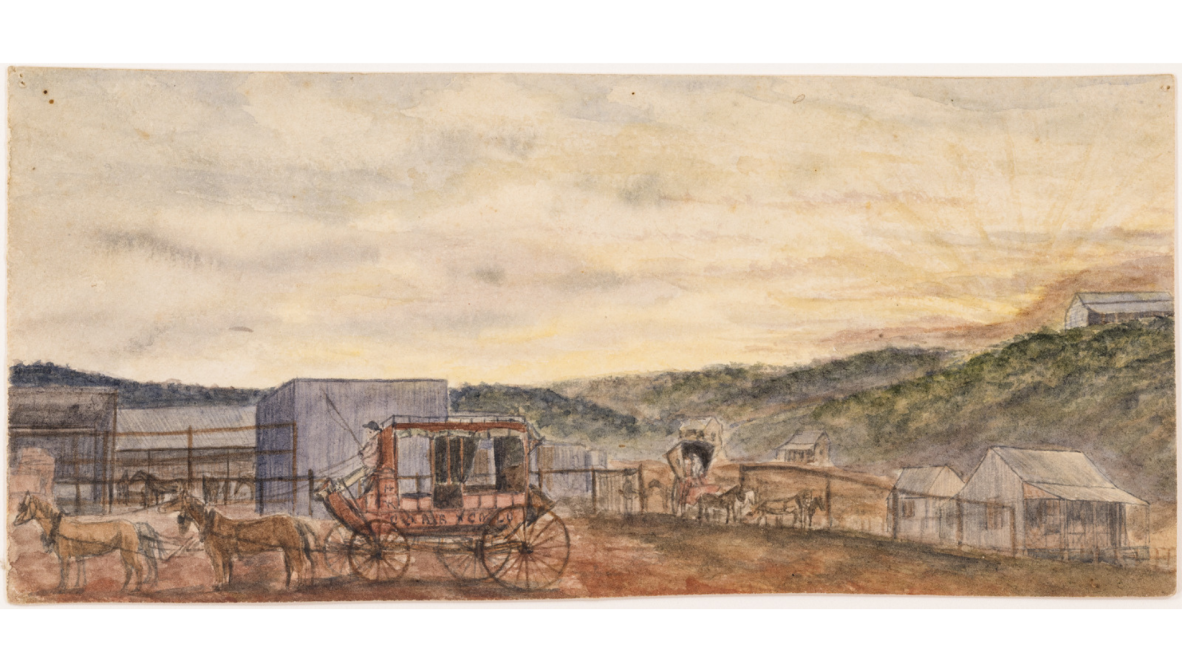
A watercolour painting by Cecil Edward Search, showing Cobb and Co.'s Croydon and Cloncurry coach leaving the stables at Normanton.
An extraordinary story indeed
Where did it all begin?

Victoria Bridge soon after completion, Brisbane, 1874
Despite being described as a frail and sickly child, Search worked throughout his younger life in mercantile houses, doing odd jobs and learning the retail trade. This work often took him to the quays, where he watched emigrants board ships with hope for a different life. In 1875, Search boarded a ship himself, embarking on a 96-day long journey to the "new" city of Brisbane.
The Brisbane that greeted Search was a bustling, rapidly growing town - statuesque civic buildings lined the horizon and the pockets of urban housing lined (what was then) a sparkling blue river.There were no universities, one train line, and the recently constructed Victoria Bridge was the only human-made structure that crossed the Brisbane River.
Search would have considered this Brisbane ‘young’, given Queensland had only become its own independent colony sixteen years earlier. Queensland was a vast, decentralised colony that accounted for a mere 9.4 percent of Australia's population. Rural areas were experiencing rapid growth due to a series of land and mineral booms, with an estimated 45% of the state's population living regionally.
According to Australia's 1875 census, there were 173,283 people living in Queensland, with 20,288 on the goldfields. These records did not count the First Nations people living in Queensland, and wouldn't until 1971.
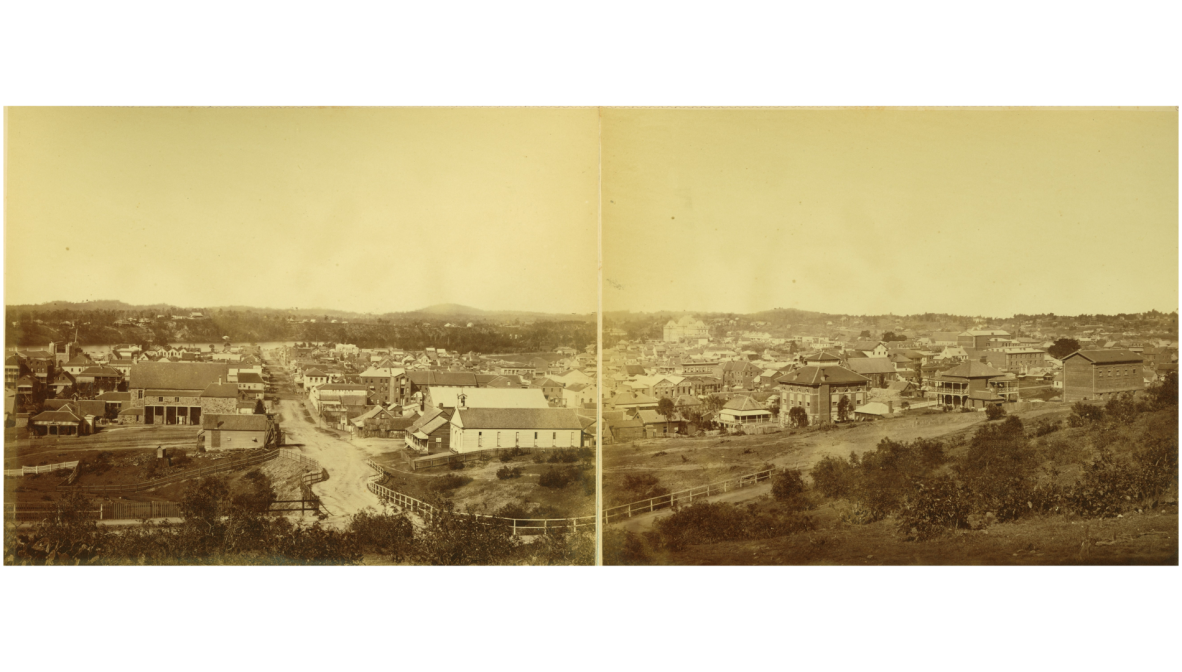
Brisbane in 1875, from Wickham Terrace
Search's strong work ethic and entrepreneurial spirit enabled him to capitalise on the sporadic regional growth across Queensland, picking up various odd jobs as a merchant and hawker. Eventually, he began to manage retail stores, and at one point opened his own general store in Cairns.
This varied work, and life in regional Queensland, ensured Search became well acquainted with the iconic transport company Cobb and Co. In 1886, thanks to his managerial and retail experience, Search secured his first job with Cobb and Co., as the manager at Normanton. Search’s responsibilities included inspecting routes and roads, overseeing the changeovers and repairs, and assisting the drivers in preparing the coaches for their journey.
In the same year, he married Clara Allyn Heap from St George, a place he had spent time working as a hawker years before.
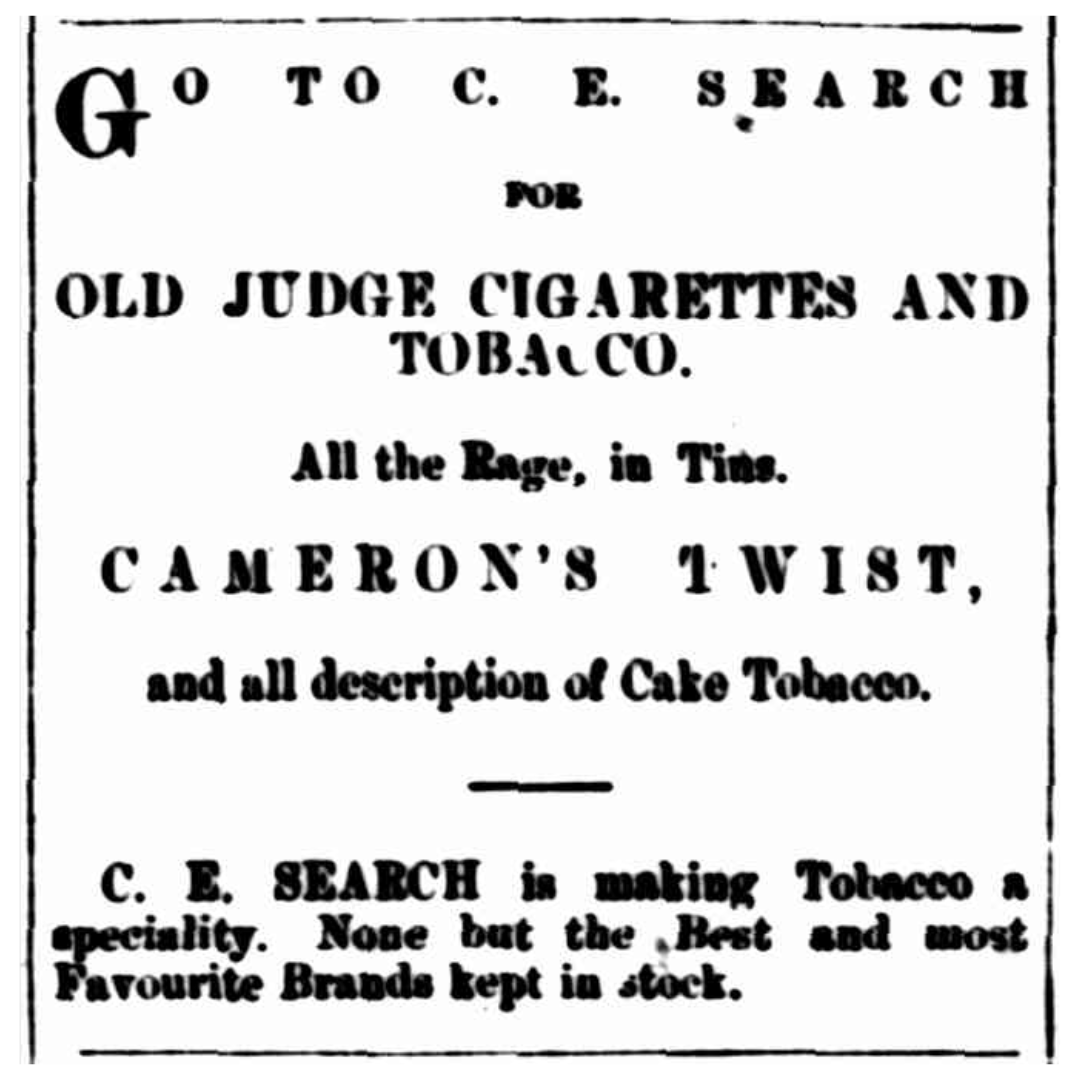
The next few years were busy – the young couple had two daughters, Dorothy (1887) and Mona (1889), while relocating to Charleville so Search's career could progress. First, he took up the position of Inspector at Cobb and Co.'s Charleville factory, then later progressed to the Road Manager of the district. His dedication to his work was well noted, citing his reputation for meeting every coach coming in, and seeing off every coach going out, each day.
From the turn of the century, Charleville became the main hub for Cobb and Co.'s operations, and Search became crucial to their enterprise.
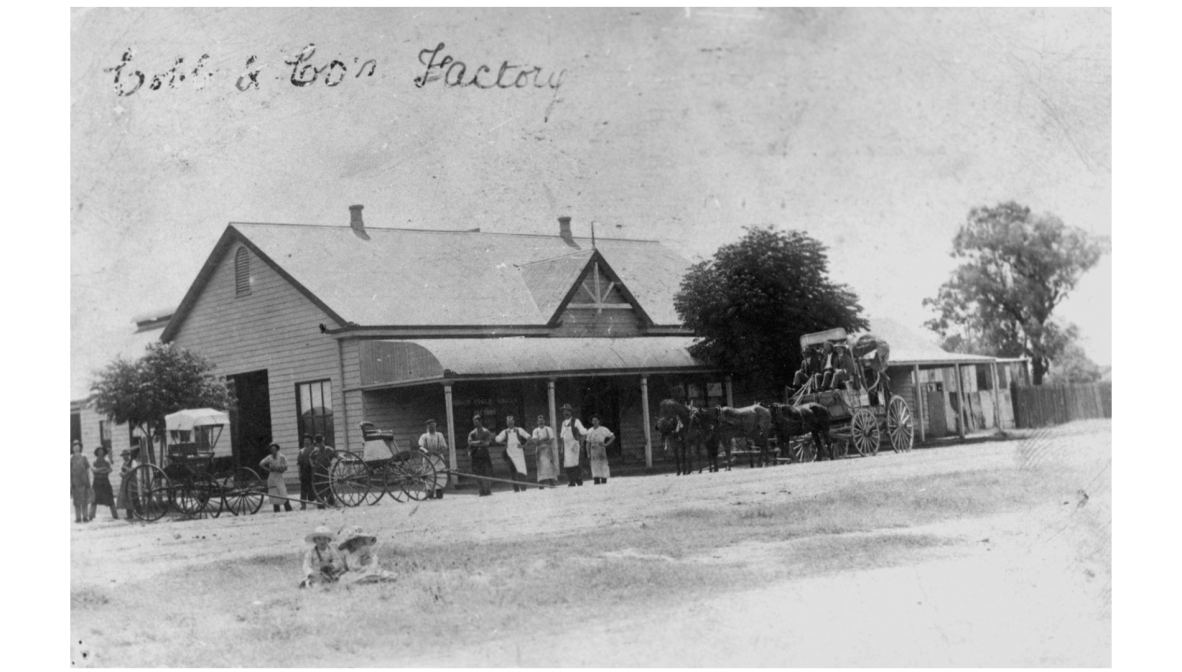
Activity around the Cobb & Co. factory, Charleville, ca. 1911
Outside of work, Search was a keen sportsman, a certified Justice of the Peace, and a volunteer firefighter. He became a well-known as respected community member across north western Queensland.
During his time in Cairns, his general store provided the growing township with essential products, and he was a member of the Chamber of Commerce. While working in Surat, he discovered fossils which were later donated to the Queensland Museum.
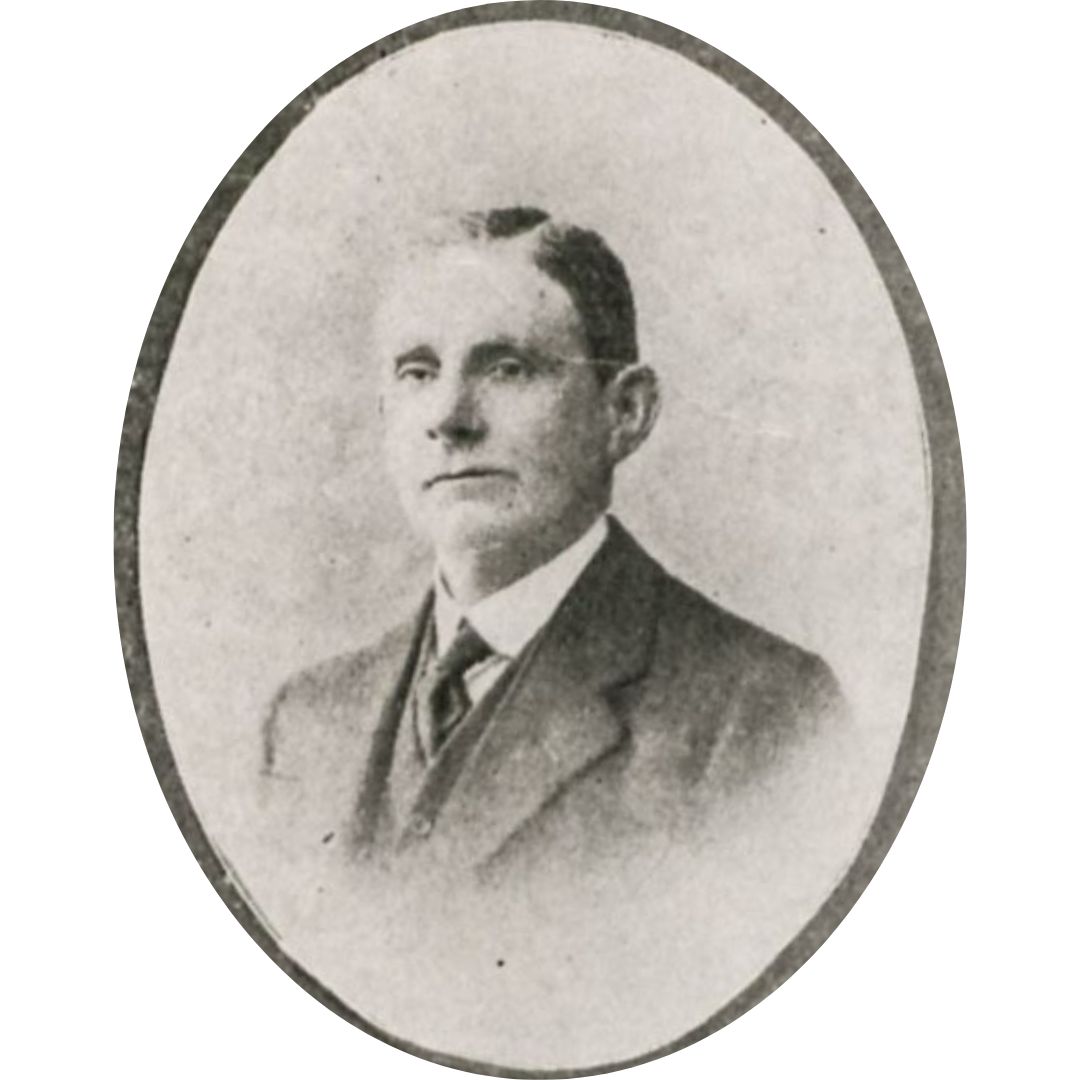
Cecil Edward Search
His longest stint living in regional Queensland was in Charleville, and where he made a home for himself and his young family by becoming significantly involved in the community. He sat on a number of committees, including the Charleville Rifle Club where over the years he was secretary, treasurer, and auditor. He was also the secretary of the Charleville Hospital Committee from 1903 to 1921, during which time the Hospital appointed its first trained nurse, his daughter Dorothy Search. Search's artistic passions perhaps led to his ongoing support for the Charleville School of Arts, and regular role on their committees.
Given the role of Cobb and Co. in sustaining these communities, it comes as no surprise that Search became a key presence within them, in more ways than one. While Search worked for Cobb and Co. for over 45 years, he was also an active contributor to regional community life for this period, contributing to their growth as well as Queensland's more broadly.
The Coaching Age
Australia’s Coaching Age (1854–1924) was a transformative period, defined by the pioneering efforts of Cobb and Co.’s horse-drawn coaches. As a vital lifeline, this legendary transport company bridged remote frontiers and delivered crucial supplies, mail, and passengers. Cobb and Co.’s dominance left a lasting imprint on Australian folklore, literature, and art, eulogising the era's rugged determination and enduring Australian spirit.
The original firm of Cobb and Co. was established by a group of Americans who called themselves “the boys” - Freeman Cobb, John Muray Peck, James Swanton, and John B. Lamber. They wasted no time setting up business when they arrived in Melbourne, in 1853. Thousands of Americans immigrated to Australia during the 1850s, which was then producing one third of the world’s gold.
For Cobb, Peck, Swanton, and Lamber, there was a fortune to be made by establishing a carrying business, capitalising on the rush by providing the much-needed service of ferrying goods and people between the fields and Melbourne. Familiar with this operation from the gold rushes in California, Cobb brought two concord wagons with him when he immigrated.
In 1854, a legend was born when the first Cobb and Co coach departed from Collins Street in Melbourne, for the mining frontier at Forest Creek, near Bendigo. The company rapidly built a well-regarded reputation, that would soon cement it as the greatest single coaching enterprise in Australia’s history.
While there were other versions of coaches and horse drawn transport in play, Cobb and Co worked in a progressive and innovative spirit, employing high quality equipment and revolutionary methods not yet seen in Australia. Their coaches were crucial instruments in expanding the colonial settlement, raking in mass profits for their service to pioneers.
It wasn’t long before the “the boys”, now boasting hefty fortunes, retired and returned to America. The company was officially sold in 1856, and the following five years were marked by rapid change and expansion, with numerous new routes emerging and changing industry conditions.
The business model changed too, shifting to a model of loosely connected firms run by individual proprietors using the name Cobb and Co. This proliferation firmly established the businesses ‘brand’ within the industry, so much so that ‘going by Cobb’ became synonymous with travelling by coach.
This all changed in 1861, when the young American James Rutherford, came into ownership of the firm through an entrepreneurial syndicate. Rutherford’s appointment as General Manager was immediate and under his direction, Cobb and Co reduced their operating expenses and expanded their services, all while maintaining a reputation for quality, efficiency, and reliability.
Cobb and Co expanded their reach into Queensland from 1865, securing mail contracts and buying out the existing lines, as well as opening new routes to frontier districts. In 1886, Cobb and Co.’s first coach left Brisbane for Ipswich, with the rudimentary roads of the time requiring the coach to be drawn by twelve horses and the driver to be strapped to the box seat.
This Brisbane – Ipswich service continued, alongside westward routes to Toowoomba, Warwick, Dalby, Condamine and Roma, all departing from the Royal Hotel in Queen Street. After the discovery of gold at Gympie in 1867, a line was added and then extended through to Maryborough.
Before long, lines also extended to Sandgate, Beenleigh, Southport, Nerang, Tallebudgera, and Murwillumbah. The Warwick lines were extended to reach the New South Wales system, via Stanthorpe to Tenterfield.
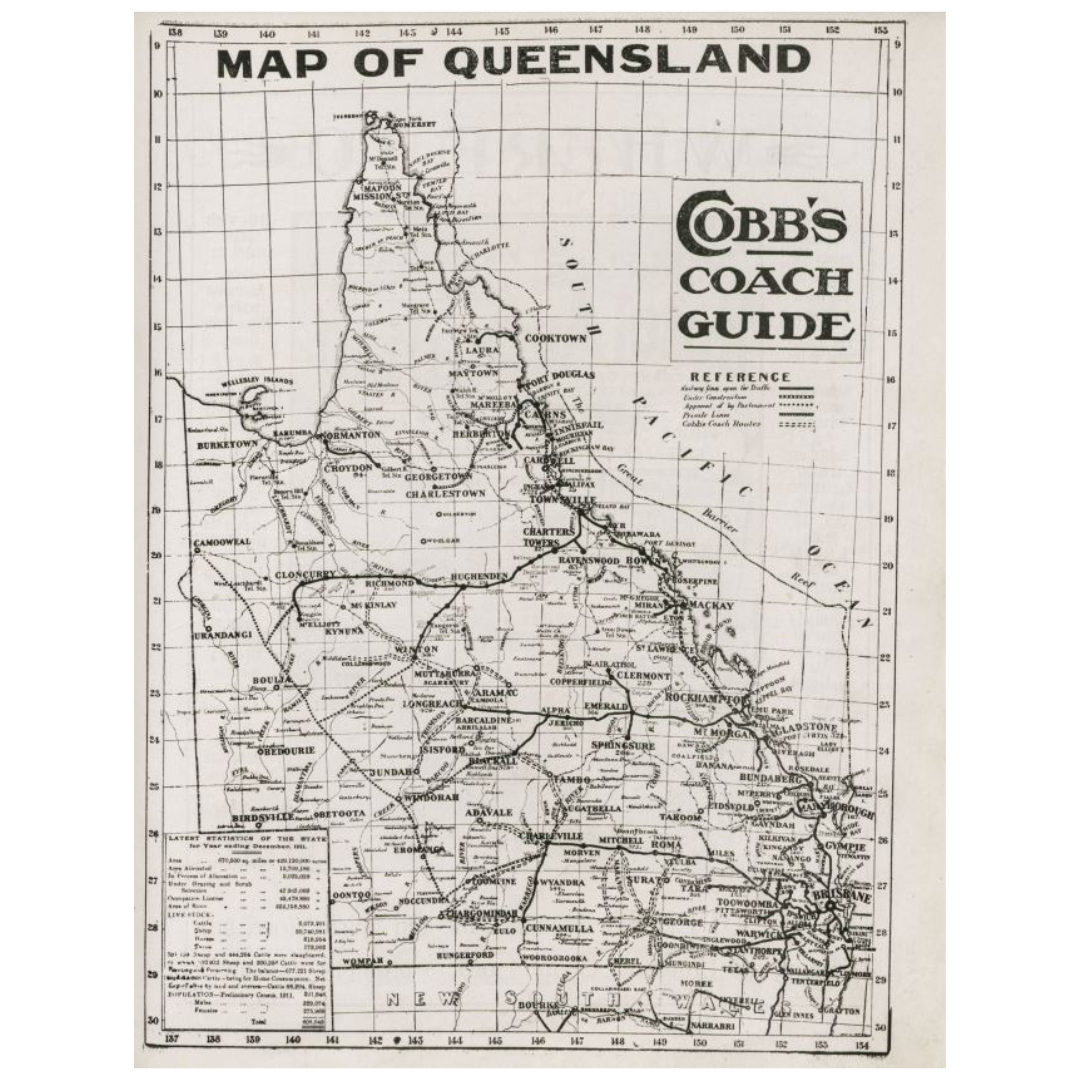
A detailed map of Cobb and Co.'s coaching routes in Queensland
Eventually, services expanded, and new ones were formed to reach even further west and north, connecting some of Queensland’s most remote outposts. The Queensland drivers were well regarded for their skill and expertise, as well as personable pluck and larrikinism, all of which were credited following bail-ups from bushrangers or in dealing with unfortunate weather.
In 1871, the discovery of gold in Charters Towers led to rapid expansion and development across regional north-Queensland. As with earlier rushes in Gympie, prospectors, miners, and entrepreneurs flocked to Charters Towers in hope of finding gold, and transport networks followed.
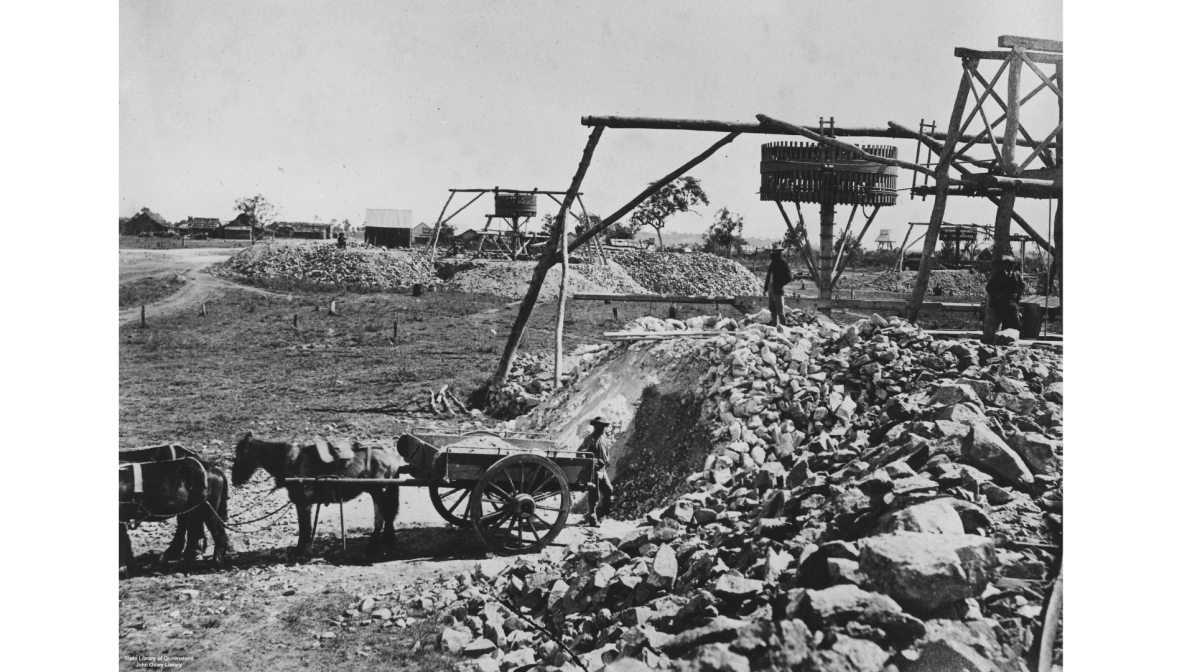
Gold mining in Charters Towers, 1878
By 1893 the Charleville factory replaced Bathurst as Cobb and Co.’s headquarters, and operations were more centralised to Queensland. At one point in time, half a dozen coach routes centred at Charleville, with arrival and departure times throughout the day keeping everyone busy.
In Coaching in Australia : a history of the coaching firm of Cobb & Co. with guide to the present coaching routes in Queensland, William Lees declared
“there were no harder worked men than Cobb and Co.’s drivers in the outside districts of Queensland, as they often have to drive with half-broken horses over half-made tracks, cutting in and out of the bush with nerve and wrists of iron”.
For these remote outposts, the arrival of a coach would at times have been the only contact made with the outside world all week. It was a highly anticipated event, with residents rushing to meet the coach upon hearing the driver play his bugle, signalling he had arrived.
In some ways, the location and frequency of transport routes guided colonial development, making remote settlement not only possible, but desirable and enjoyable. The Cobb and Co. routes extended beyond railway developments, relying on systems of regular horse changing stations around 20kms along each route.
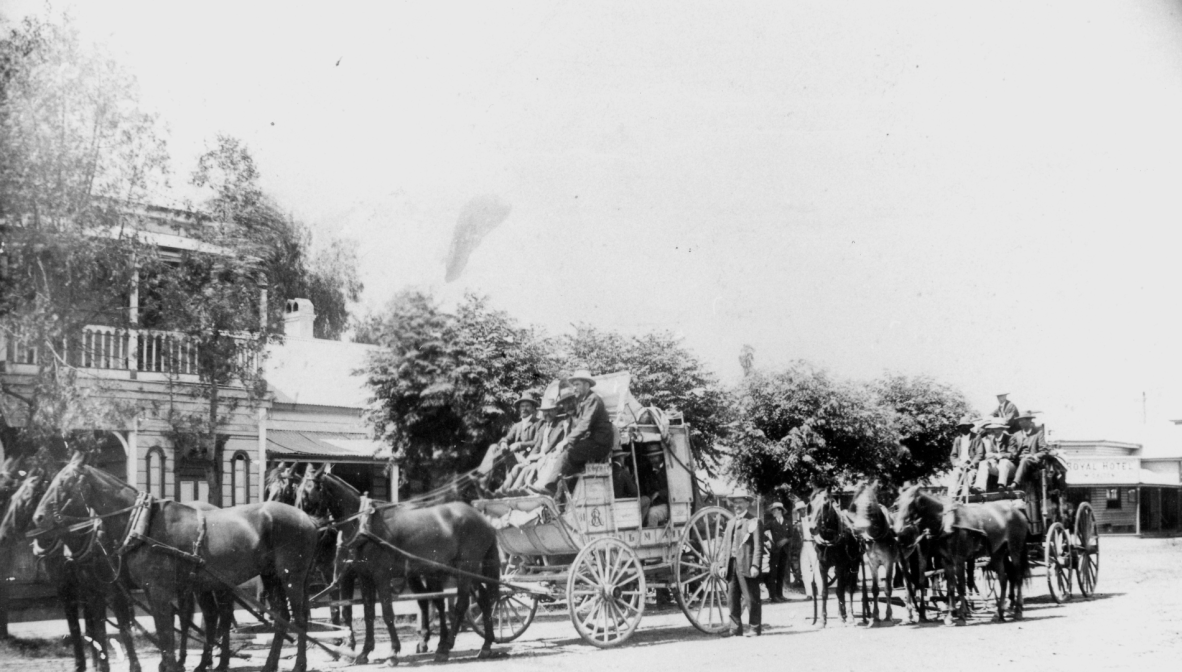
Charleville, 1906
By the turn of the century, Cobb and Co. operated 39 routes in Queensland, traversing over 31,000km with the help of some 9,000 horses each week. The company bred their own horses on some of the pastoral properties they acquired across Queensland.
During the early 1900s, the expansion of the railway system and emergence of motor vehicles diminished the need for coach travel across Queensland. James Rutherford passed away in 1911, and by this point Cobb and Co. were investing in motor vehicles.
Following the end of the First World War, motor vehicles and aircraft were increasingly responsible for passenger transport services across the country and permanent Air Mail services were established. By the middle of 1924, the run from Yuleba to Surat, on the Brisbane-Charleville line, was the only Cobb and Co. service still in operation.
On 14 August 1924, Cobb and Co.’s last service ran on this line, travelling the 75km to Yuleba from Surat. Search was not only present for this run, but helped prepare the coach for departure, which signalled the end of Australia’s Coaching Age.
The amateur artist
Search’s watercolours are naive depictions of 19th century life function as historical documents, providing a unique first-hand perspective of the remote Queensland outposts where he worked for most of his life.
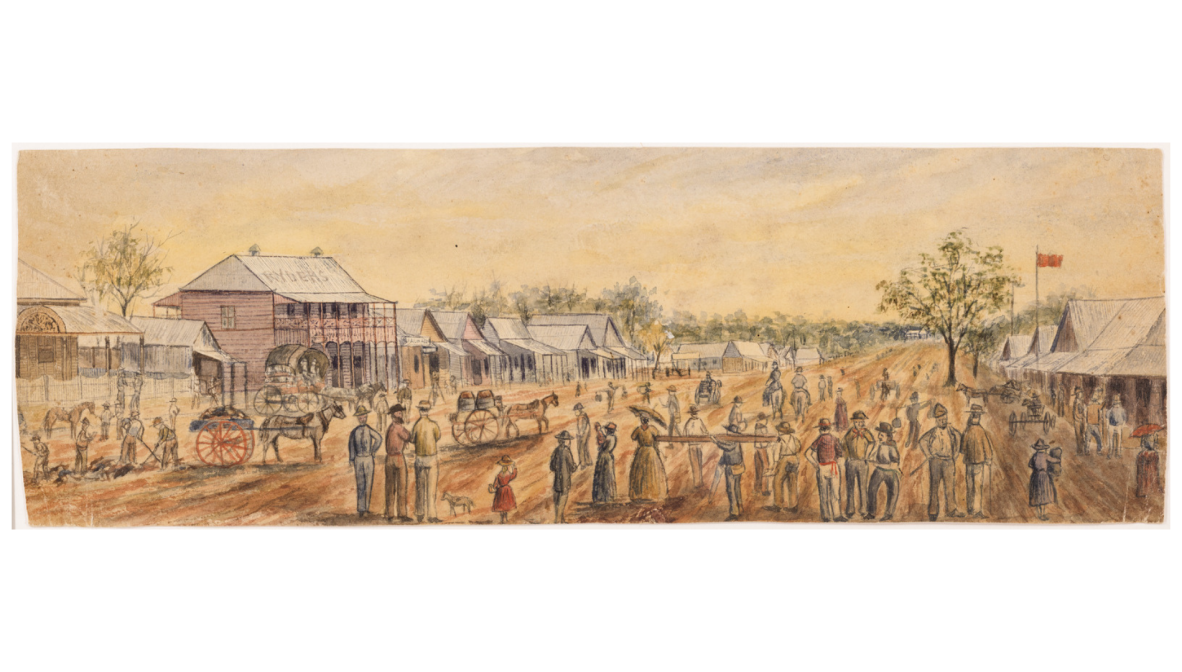
Samwell St, Croydon, 1889
As a medium, watercolour dominated the early art historical landscape in Australia, borne out of a desire to record botanical, zoological, topographical, and social subjects related to European exploration and settlement. Often, these documentary works were imbued with a sense of civic pride and the colony’s burgeoning prosperity.
Requiring only a few materials, watercolour painting lent itself well to amateurs or travelling practitioners, such as military officers, explorers, and self-trained artists. Most successful watercolourists are also skilled draughtsman, with both mediums respected for their ability to record fine detail and realistic subjects.
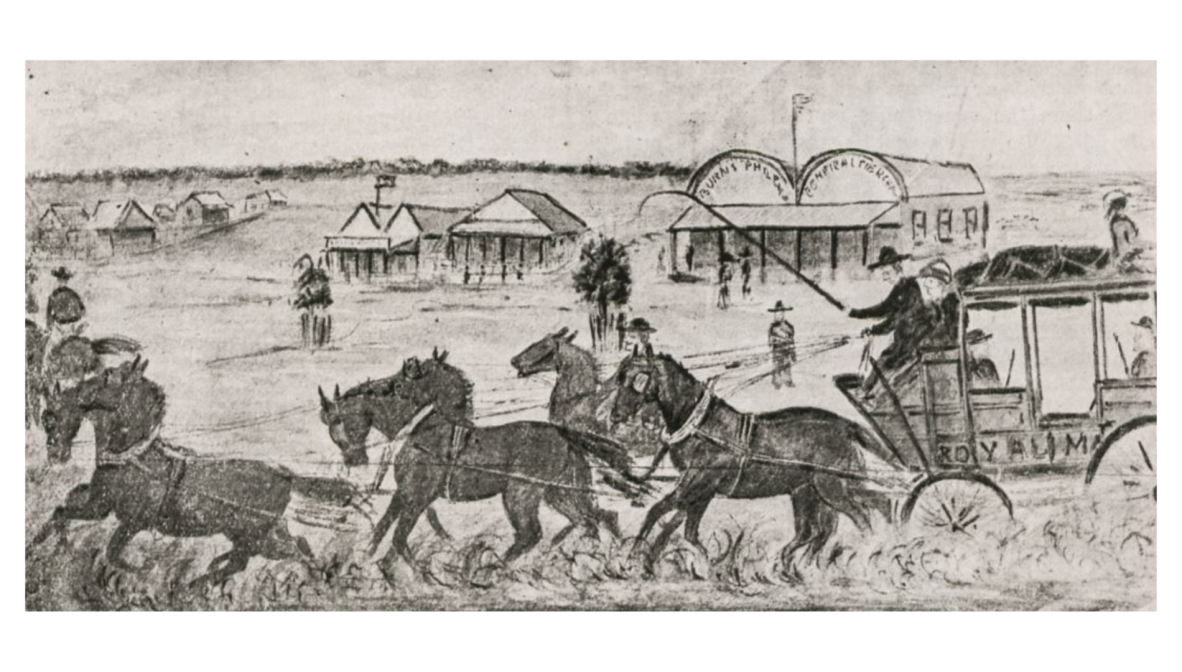
Sketch of The Last Coach from Croydon to Normanton, by Cecil Edward Search
Amateur artists such as Search would have been heavily reliant on imported quality art paper, at times reduced to using scraps or as an example in our collection shows, the back side of paintings already completed.
During the late 19th century, artists faced difficulties sourcing adequate green paints, forced to mix their own from blue and yellow pigments or to rely on fugitive greens, that were prone to fade, darken, or change hue when exposed to sunlight. It’s likely Search experienced this issue, with some of his depictions of greenery appearing dull and muted, comparatively to the other rich hues within the landscape.
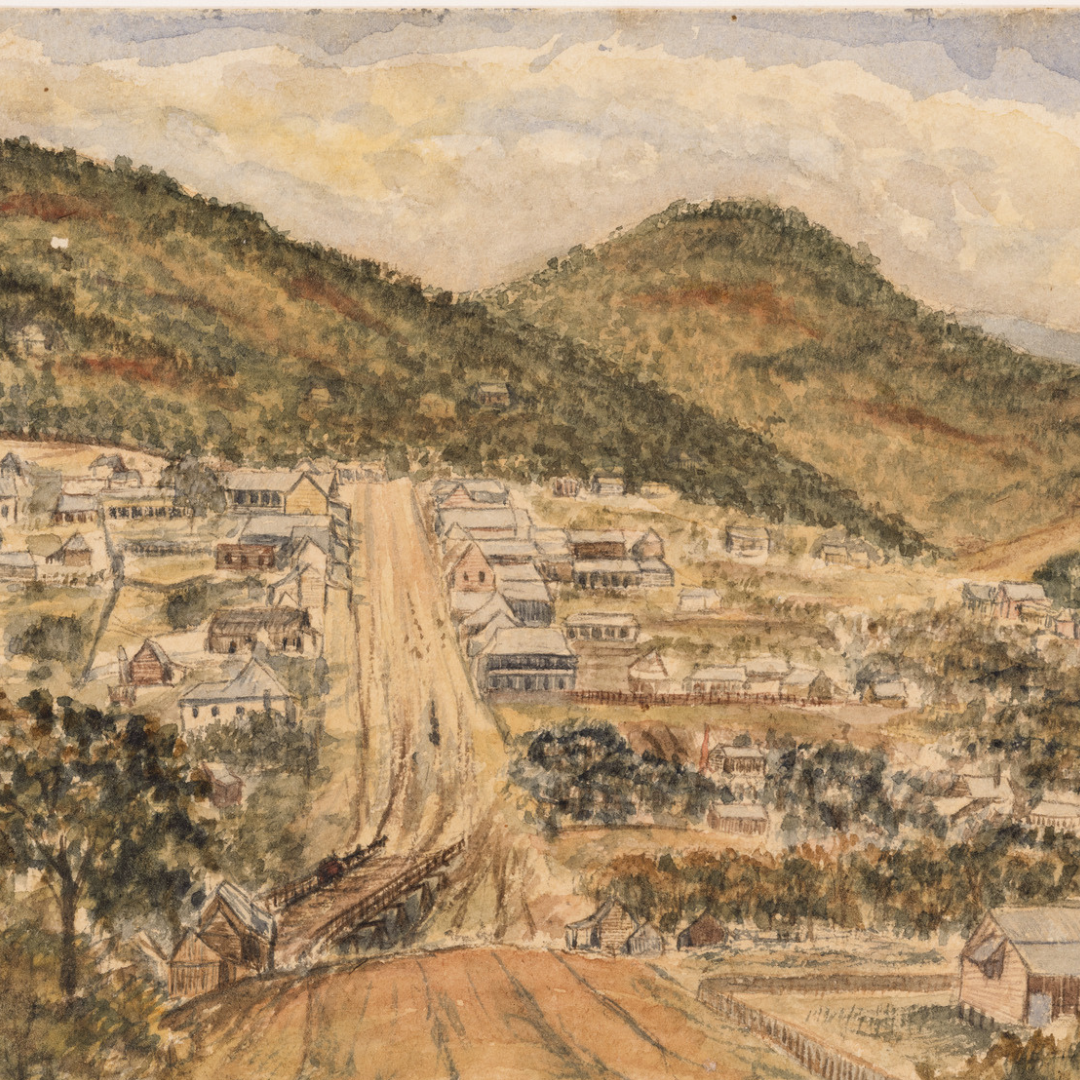
Detail of Herberton in 1889
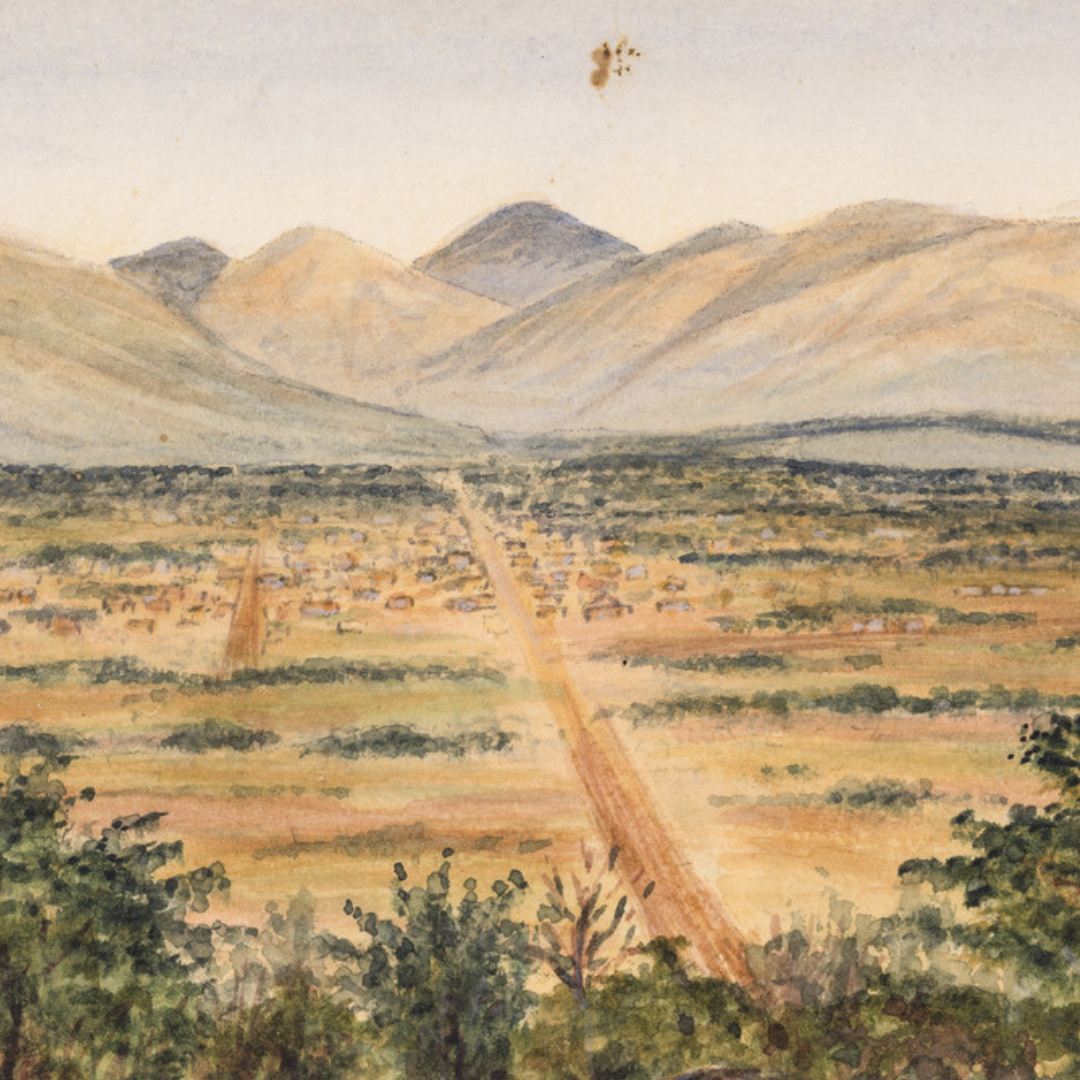
Detail of Unidenitfied town, ca. 1880s
These excerpts of urban landscapes painted by Search in the 1880’s, provide naive depictions of burgeoning rural life in north-western Queensland. Search’s paintings provide a uniquely first-hand perspective of a period where these landscapes underwent significant growth and change, largely due to the expansion of transport networks such as Cobb and Co.
The immediacy and portability afforded by the medium, lent itself to Search’s itinerant lifestyle, allowing him to document ordinary scenes of 19th century life, which now provide a historic record. Search was described by his contemporaries as ‘an artist of some note’ and his daughter Dorothy, would go on to sell some of his works at various fairs and fetes over the years. He was part of a growing cohort of amateur artists in Australia at the turn of the century, which eventually led to the establishment of The Australian Watercolour Institute in 1923, and various other smaller societies and schools.
Search’s artistic interests featured consistently throughout his life, aside from producing watercolour works and sketches, he was an active member of the Charleville School of Arts and noted as visiting exhibitions in Brisbane by the Arts and Crafts Society.
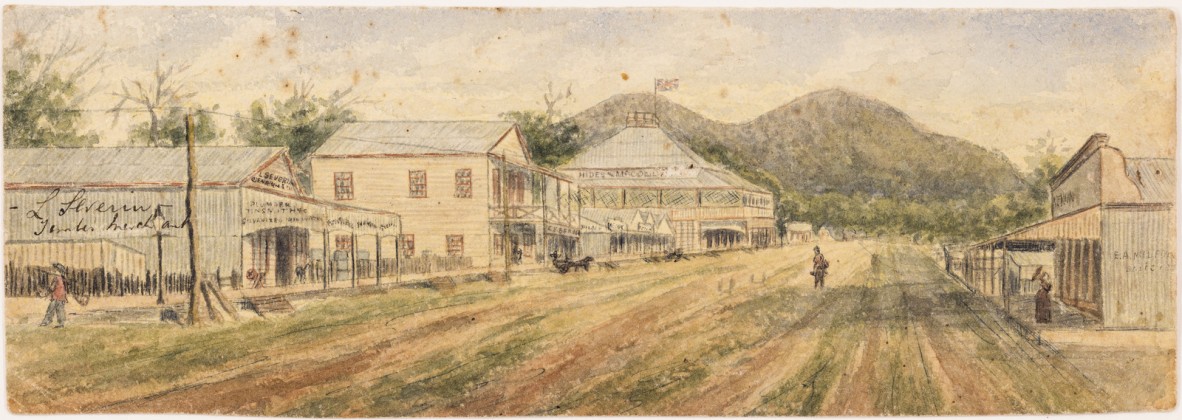
Cairns, 1887
Cecil Edward Search traded dreary skies for dusty plains, finding independence, a family, and an artistic outlet through his lifelong association with Cobb and Co.
His watercolour landscapes frame more than burgeoning urban development, illustrating his extraordinary story living and working within communities across rural Queensland.
References
A pictorial history of Cobb and Co.: the coaching age in Australia, 1854-1924, 1977, Kenneth A. Austin, Rigby Ltd. John Oxley Library, State Library of Queensland. Call no. Q 388.3228 AUS
Along the tracks of Cobb and Co. - The Western Run, Book 2: Brisbane, Toowoomba, Roma and Charleville, 2022, Hazel T. Johnson. John Oxley Library, State Library of Queensland. Call no. Q 388.3228 JOH
Along the tracks of Cobb and Co. : Cobb’s coach drivers: History Speaking for itself, 2023, Hazel T. Johnson. John Oxley Library, State Library of Queensland. Call no. Q 388.3228 JOH
The days of Cobb & Co., and other verses, 1906, G. M Smith, Parramatta Federal Printing Works. John Oxley Library, State Library of Queensland. Call no. RBJ A821.2 SMI
Coaching in Australia: a history of the coaching firm of Cobb & Co. with guide to present coaching routes in Queensland, ca. 1925, William Lees, Carter Wilson Co. John Oxley Library, State Library of Queensland. Call no. RBQ 388.3228 LEE
Cobb and Co’s catalogue of high class vehicles, ca. 1915, Cobb & Co. John Oxley Library, State Library of Queensland. Call no. RBJ 388.341 COB
Australian watercolour painters : 1780 to the present day, 1989, Jean Campbell, Roseville, N.S.W. : Craftsman House. John Oxley Library, State Library of Queensland. Call no. RBHMON CAM
Comments
Your email address will not be published.
We welcome relevant, respectful comments.